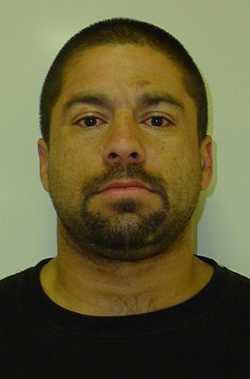KELSEYVILLE, Calif. – Needing to come up with $2.3 million in spending reductions for the coming two school years, the Kelseyville Unified School District Board of Trustees spent four hours Tuesday night going through a list of 32 items looking for places to cut.
Secretarial jobs, a library clerk, campus monitors, elementary school teacher positions and the closure of Gard Street School were among the painful proposed cuts that the board added to its recovery list.
Board President Rick Winer said of the items on the list, “These are not things we look at as expendable. These are things that we really need to have.”
However, he added, “Our hands are tied and we're forced to make these reductions,” the result of a 20-percent reduction in funds over the last several years.
The district is facing between $1.6 million and $2.3 million in cuts, the higher number resulting if the governor's tax proposals don't get voter approval this summer, district officials said.
The actions the district is being forced to take prompted teacher and parent Robin Colt to tell the board during the meeting, “It's frightening. I don't know what kind of a school we're going to have.”
Adding to the district's troubles is that it recently was placed in “qualified” status, meaning that its budget is not in balance and that it is now receiving assistance and oversight from the Lake County Office of Education.
Superintendent Dave McQueen told the group that the district's budget has to be certified by the county office and the state.
He said the “elephant in the room” for the district for many years is its health and benefits package, which his known to be the best in the county. But it's expensive for the district, as are retirement liabilities.
A list of proposed recovery elements that are related to negotiations with the certificated and classified unions, and which the board didn't include in its line-by-line review, included a proposal to change the health and welfare plan for all groups, with savings estimated between $300,000 and $900,000.
After slogging through the list before an audience of close to 70 people – teachers, classified staff and parents – the board came up with approximately $2,293,400 in items proposed for cuts, about $6,600 short of the goal.
Those cuts would amount to savings of $867,700 in the 2011-12 school year, according to district Chief Financial Officer Tiffany Kemp.
Spared – again – was Riviera Elementary, which the board had voted against closing last fall. Winer said neighborhood schools like Riviera, which the community had fought to keep open, “are the backbone of our culture.”
But Board member Chris Irwin said they may have to revisit the issue depending on how serious the district's budget issues become over the next year.
Also spared were the district's sports programs, with the board agreeing with Board member Peter Quartarolo's sentiments that sports is “an integral part of a well-rounded education.”
Board members had feared that cutting sports programs would result in students leaving the district, which would only add to the district's already declining enrollment.
The board also kept the yearbook and K-Corps electives at Kelseyville High School. When Irwin suggested that perhaps the county could help cover the K-Corps teacher's stipend since the students help in search and rescue operations, Supervisor Rob Brown approached the podium and said, “You were reading my mind.”
He added, “I would be more than happy to take that back to our board and ask for that,” suggesting that asset forfeiture money could be used to help with the program.
Among the most hotly contested proposed cuts involved school maintenance and custodial jobs, a library clerk that will be cut in the second year, several part-time secretarial positions and campus monitors.
Several people spoke out to save the library clerk, which will be cut to save the district $44,000. They argued that library resources were already thin – so thin that Holley Luia, president of the district's chapter of the California School Employee Association, said, “Something's gonna pop.”
Donna Goodwin Nelson, a district bus driver, told the board about a first grader she knows, an “amazing” little girl who cherishes her library time, like so many of the children do, because it offers her the chance to look at books. “So many of these little people, this is their only environment where they have that opportunity.”
A further reduction of library staff hours would be the equivalent of putting a cage around the books, suggested Mt. Vista Middle School teacher Cheryl Mostin.
The board also chose to save $72,000 by cutting the campus monitor spots, which are equivalent to 1.5 full-time positions.
Marcia Porter, Kelseyville High School's campus monitor, said she assists the principal every day in dealing with children leaving campus, doing drugs at school or being caught with drugs, and the associated disciplinary issues.
“I appreciate that this is just little Kelseyville but the drug problems are real,” she said, recounting going out to find children skipping class and bringing them back to school.
“I believe in my heart that it takes a whole town, a village if you will, to raise a child. I am here every day to do that and I do a good job,” she said, adding, “Think hard before you remove us from your schools.”
Teachers union President Rico Abordo also appealed to the board not to cut teaching positions further. Both the classified and certificated bargaining units have made concessions, he said, with teachers agreeing to increased class sizes of 30 students, up from 20, he said.
At the same time, teacher numbers are down. Three years ago there were 94 teachers in the district, at the start of this year they were at 81. With some of the proposed cuts, Abordo warned the number of teachers could fall to 78.
As the evening wore on and the clock ticked past 11 p.m., the board decided it wanted to look at other possible reductions to meet the goal and also see the recovery plan proposals put into writing.
But after four hours, the board and audience were all bleary-eyed and exhausted.
The result was that the board agreed to continue the meeting at 8 p.m. Wednesday in the district office board room, 4410 Konocti Road, at which time the goal is to finish up the work.
E-mail Elizabeth Larson at This email address is being protected from spambots. You need JavaScript enabled to view it. . Follow Lake County News on Twitter at http://twitter.com/LakeCoNews , on Facebook at http://www.facebook.com/pages/Lake-County-News/143156775604?ref=mf and on YouTube at http://www.youtube.com/user/LakeCoNews .









